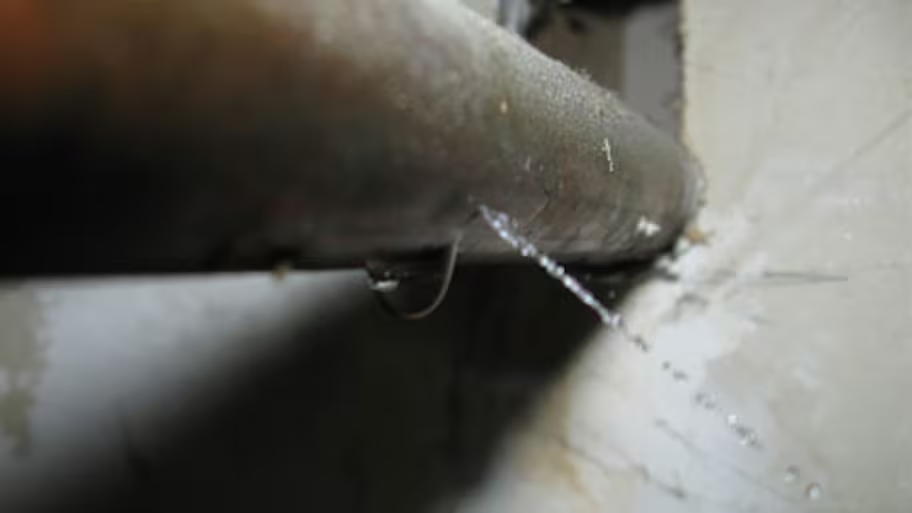Identify the Top Triggers for Water Leakage in Your House
Identify the Top Triggers for Water Leakage in Your House
Blog Article
We have discovered the article about Most Common Causes of Leaky Pipes below on the web and figured it made sense to relate it with you on this page.

Leaks not only trigger waste of water but can additionally create unneeded damages to your residence as well as promote unwanted organic growth. Sadly, water leaks could go unnoticed because a lot of the pipework in our house is concealed. By comprehending and looking for everyday situations that cause leaks, you can protect your home from future leakages and also unneeded damages. Today, we will certainly take a look at 6 leak causes that may be causing your pipelines to drip.
Elbowing in origins
The majority of water leakages start outside the house rather than inside it. If you discover an unexpected decrease in water pressure, say in your tap, require time to head out and examine your lawn. You may notice damp spots or sinkholes in your yard, which could indicate that tree roots are invading water lines causing water to permeate out. You can have your plumber check for invasion, specifically if you have trees or hedges near your property.
Corroded water supply
As time passes by, your plumbing system ages as well as deterioration such as rust might start eating away the pipelines. This could be the cause of staining or warping on your water pipes. This calls for an assessment with your plumber quickly. If our plumbing system is old, consider changing the pipes given that they go to a greater danger of corrosion than the newer models.
Malfunctioning Pipe Joints
The point at which your pipelines link is often the weakest web link in the waterline. Pipe joints can weaken over time, resulting in water leaks. The majority of pipeline joints are not quickly noticeable. If you have loud pipelines that make ticking or banging sounds, especially when the hot water is activated, your pipeline joints are probably under a lot of pressure. It is recommended to have your plumber examine your system annually.
Immediate temperature changes.
Extreme temperature changes in our pipelines can cause them to expand and also contract suddenly. This growth and also tightening may cause cracks in the pipes, specifically if the temperature level are below freezing.
Poor Water Connectors
At times, a leak can be caused by loosened pipes and also pipelines that supply your appliances. In case of a water links leakage, you may discover water running straight from the supply line or pools around your appliances.
Obstructed Drains
Obstructed drains might be irritating and inconveniencing, however they can sometimes wind up creating an overflow resulting in burst pipes. Maintain getting rid of any kind of materials that might decrease your drains that could obstruct them to stay clear of such hassles.
All the above are causes of leakages but not all water leakages result from plumbing leaks; some leaks could come from roof covering leakages. All leaks must be repaired immediately to avoid water damages.
Leakages not only cause waste of water yet can additionally trigger unnecessary damages to your home and promote unwanted natural growth. By understanding as well as looking for daily situations that trigger leakages, you can safeguard your house from future leakages and also unnecessary damages. Today, we will certainly look at six leak triggers that might be creating your pipes to drip.
At times, a leak can be triggered by loosened hose pipes and pipes that provide your appliances. In situation of a water links leak, you may discover water running straight from the supply line or pools around your home appliances.
How To Check For Water Leak In Your Home
How To Check for Leaks
The average household's leaks can account for nearly 10,000 gallons of water wasted every year and ten percent of homes have leaks that waste 90 gallons or more per day. Common types of leaks found in the home are worn toilet flappers, dripping faucets, and other leaking valves. These types of leaks are often easy to fix, requiring only a few tools and hardware that can pay for themselves in water savings. Fixing easily corrected household water leaks can save homeowners about 10 percent on their water bills.
To check for leaks in your home, you first need to determine whether you're wasting water and then identify the source of the leak. Here are some tips for finding leaks:
Take a look at your water usage during a colder month, such as January or February. If a family of four exceeds 12,000 gallons per month, there are serious leaks.
Check your water meter before and after a two-hour period when no water is being used. If the meter changes at all, you probably have a leak.
Identify toilet leaks by placing a drop of food coloring in the toilet tank. If any color shows up in the bowl after 10 minutes, you have a leak. (Be sure to flush immediately after the experiment to avoid staining the tank.)
Examine faucet gaskets and pipe fittings for any water on the outside of the pipe to check for surface leaks.
Undetected water leaks can happen without the home or business owner even realizing. If you suspect a water leak, but not able to find the source. It is time to contact a professional water leak detection service, The Leak Doctor.
How To Find a Water Leak In Your Home
https://www.leakdoctor.com/blog/How-To-Check-For-Water-Leak-In-Your-Home_AE197.html

As a passionate reader about Common Water Leaks In House, I think sharing that segment was really useful. Are you aware of another person who is fascinated with the topic? Be sure share it. Many thanks for taking the time to read it.
Emergency? Dial immediately. Report this page